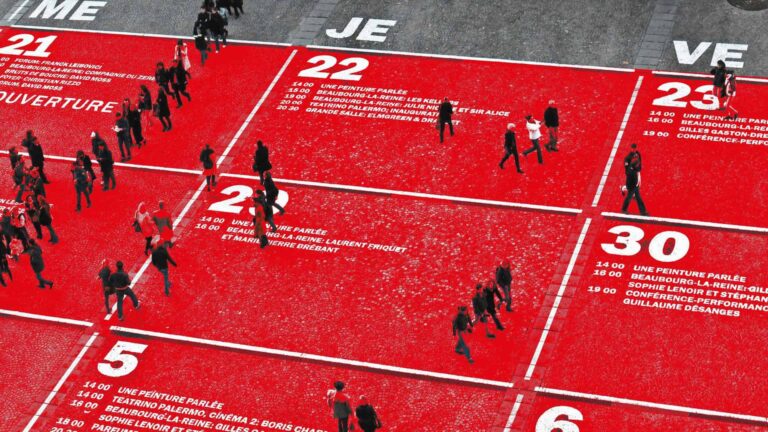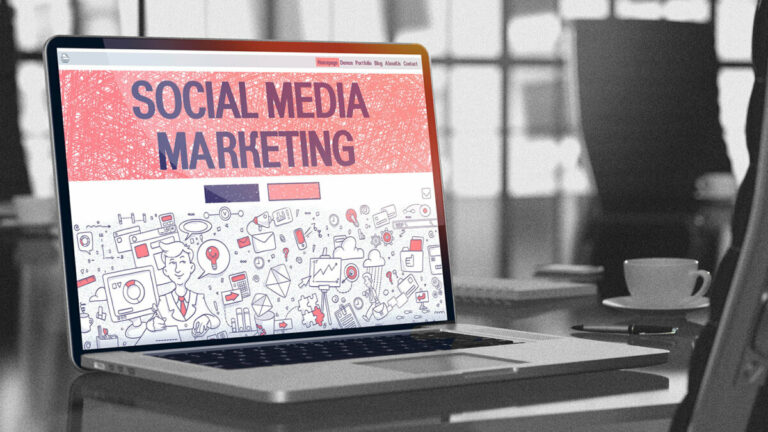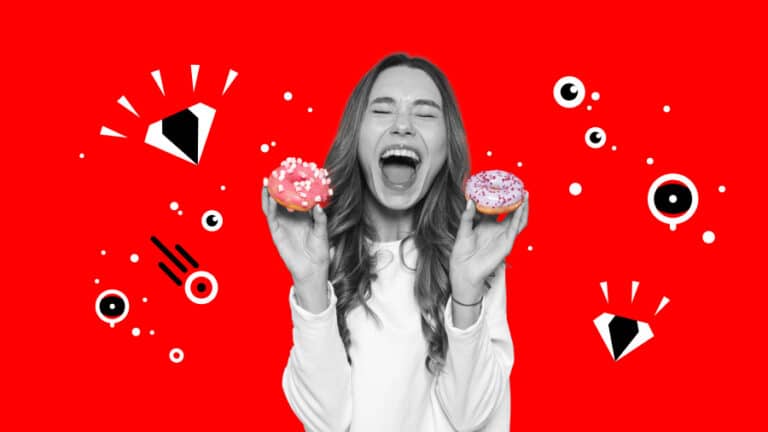Short, crisp and immediately captivating - that is the essence of snackable content. This format transforms complex information into appealing, easily digestible morsels of information that reach and inspire your target group. Read this article to find out how you can best use these snackable content formats to convey messages clearly and convincingly.
Summary: What is snackable content - and why is it so effective in marketing?
- Definition and purpose: Snackable content is compact content with a clear focus. It should be quickly consumable, for example in the form of graphics, short videos or concise texts.
- Advantages: They boost engagement, increase visibility and support efficient content production.
- Platform optimisation: Content should always be adapted to the respective platform, e.g. short & visual on Instagram, technical on LinkedIn.
- Role in the content strategy: Snackable content does not work in isolation, but in combination with long-form content, clear topic planning and content recycling.
- Target group approach: The format and tonality vary depending on the target group - short videos for young talents, concise text slides for decision-makers.
- Supplement, not a replacement: Snackable content supports other formats and ensures greater reach, recognition and impact in the funnel.
What is snackable content?
Snackable content is short, targeted content designed to convey complex business information quickly and clearly. These formats are ideal for reaching and engaging decision-makers with limited time.
A key advantage is that this content is easy to consume and promotes high shareability on different platforms.
Why use snackable content?
Snackable content is particularly effective in B2B marketingbecause it is the Commitment increases: Short videos and concise Blog posts are easy to consume and encourage sharing and commenting. In today's flood of information vDetermines snackable content messages clearly and conciselywhich facilitates the targeted provision of information. ô
Regular provision of such content also ensures Continuous brand presence and keeps the brand in the consciousness of the target group. In addition, the division of extensive content into smaller units enables Efficient content productionby converting whitepapers into blog posts, infographics or social media posts, for example.ô
Make it Snackable: How content becomes a snack
Snackable content should be integrated into the marketing mix on various platforms to emphasise expertise and innovative spirit. Here are some effective formats and examples:ô
- Social media teaser: Short posts that point to more comprehensive content, such as teaser videos that lead to case studies on your website.ô
- Infographics: Visualise complex data and processes to make them more tangible and shareable. Ideal for platforms such as LinkedIn to clearly present efficiency improvements or new technologies.ô
- Microblogs: Provide brief insights into industry trends or news that can be easily shared, e.g. via threads or X.ô
- Explanatory videos: Use animated videos to explain complex products or services in a simple and understandable way. Ideal for platforms such as YouTube or Instagram.ô
- Customer testimonials: Short videos on LinkedIn presenting successful projects.ô
Examples of snackable video content
- Tutorial videos: Use Instagram Reels to demonstrate software functions concisely.ô
- Behind-the-Scenes: Authentic insights into your company on TikTok.ô
- Product presentations: Short videos on YouTube Shorts to present new solutions.ô
- Interactive live videos: Webinars and Q&A sessions on Instagram Live to interact directly with your target group.ô
ô
Platform-specific formats: How to use snackable content in a targeted wayô
For a successful B2B marketing strategy, it is crucial to adapt snackable content to the respective platform in order to achieve the greatest possible impact. LinkedIn is great for infographics and short-form videos, as they convey complex information and company successes quickly and in a visually appealing way. ô
YouTube and TikTok are ideal for explanatory and entertaining videos that can offer a high organic reach thanks to their algorithm. Instagram and Facebook, on the other hand, are perfect for visual content and short clips that encourage engagement through comments and likes.
"" Did you like this article? Then stay up to date with our newsletter! ""
Advantages of snackable content compared to long contentô
- Adaptation to changing usage habits: Snackable content adapts to the shorter attention span and information consumption on mobile devices, which is particularly relevant in the B2B sector.ô
- Increased reach and engagement: The easy shareability in social media increases the reach and leads to more user engagement. The short, concise formats are well suited for viral distribution.ô
- Resource efficiency: Snackable content is often quicker and cheaper to create, which enables a higher frequency of content creation.ô
- Versatility of formats: From Short videos to infographics and quotes, there are many formats that allow for a varied content strategy.ô
- Synergy with detailed content: Snackable content can serve as a teaser for long-form content in order to arouse interest in more in-depth information. It also supports Situational content marketing (SCM) by reacting quickly to current trends and events and thus delivering relevant content in real time.ô
Why is snackable content relevant for B2B marketing?ô
Snackable content plays a crucial role in B2B marketing as it can be seamlessly integrated into all phases of an inbound marketing strategy, creating more personalised customer experiences. It also helps to increase brand awareness by using short, concise formats to increase relevance in social media and ideally generate viral content.ô ô
As more and more B2B decision-makers consume content via smartphones, snackable content is perfect for mobile use. After all, it enables additional touchpoints, which sustainably strengthens brand perception.
Integrating snackable content into the content strategyô
The integration of snackable content into an existing Content marketing strategy can be achieved through various approaches:ô
- Targeted planning: Plan the use of snackable content strategically. Define clear goals, such as increasing reach, and create a content calendar that takes both snackable and long-form content into account. Adapt the formats to different platforms and target groups to achieve the best possible impact. ô
- Content lifecycle management: Develop a strategy for the entire lifecycle of your content, including regular updates and reuse of snackable content. Effective content management ensures that content always remains relevant and maximises value through its versatile use and adaptation to current trends.ô
- Balanced content mix: Combine short formats with longer, more in-depth content. Use snackable content to generate attention and offer additional in-depth content to demonstrate your expertise. This alternation between short and long formats enables effective information transfer.
- Use content recycling: Use existing, longer content as a basis. For example, key statements from blog articles can be prepared as social media posts or important statistics from white papers can be designed as infographics. This enables efficient multiple use.ô
- Cross-media marketing: Distribute snackable content via various channels. Share this content on your blog, in social media profiles and integrate it into newsletters. Snackable content is ideal as a teaser for more detailed content, allowing you to reach your target group on different platforms.ô
ô
These approaches systematically integrate snackable content into your overall strategy, allowing you to benefit from the advantages of short, easy-to-consume content without sacrificing the depth of content offered by longer formats.ô
ô
"" Did you like this article? Then stay up to date with our newsletter! ""
Target group analysis and snackable content formats in B2Bô
The choice of the right content formats for snackable content in B2B marketing depends heavily on the Target group from. Different decision-makers within a company have different information needs and prefer different content formats:ô
- C-level decision-makers: This target group is interested in strategic information and prefers formats that offer data that can be utilised quickly. Infographics and short executive summaries are particularly suitable as they present complex information clearly and provide a quick overview of important key figures and trends.ô
- Technical decision-makers: Engineers and IT managers often need detailed technical information. Precise explanatory videos or short tutorials are ideal for explaining specific product functions or technical processes in a clear and easy-to-understand way. These formats should be fact-focused and solution-orientated to support their analytical approach.ô
- Purchasing and procurement manager: This group responds well to customer testimonials and case studies that highlight success stories and concrete savings potential. Short videos or SlideShare presentations can efficiently emphasise the benefits and ROI of a solution and influence the purchase decision.
- Marketing and sales manager: This target group is interested in market developments, trends and differentiation from competitors. Microblogs, social media teasers and behind-the-scenes clips are ideal for promoting new marketing campaigns, product launches or industry events.ô
- Operational managers: This target group is looking for practical information on how to improve processes and workflows. Checklists, how-to guides and process diagrams in short, easy-to-understand formats can help them make decisions on operational improvements.ô
ô
Conclusion: Snackable content is the key to successô
Snackable content is more than just a trend - it is an essential strategy for standing out in today's information overload and reaching your target group effectively. Through the targeted use of short, appealing content, you can not only attract the attention of your target group, but also anchor your brand in their memory.ô
Ready to take your content marketing to the next level? Let's develop your snackable content strategy together and maximise the impact of your messages! Write to us!







